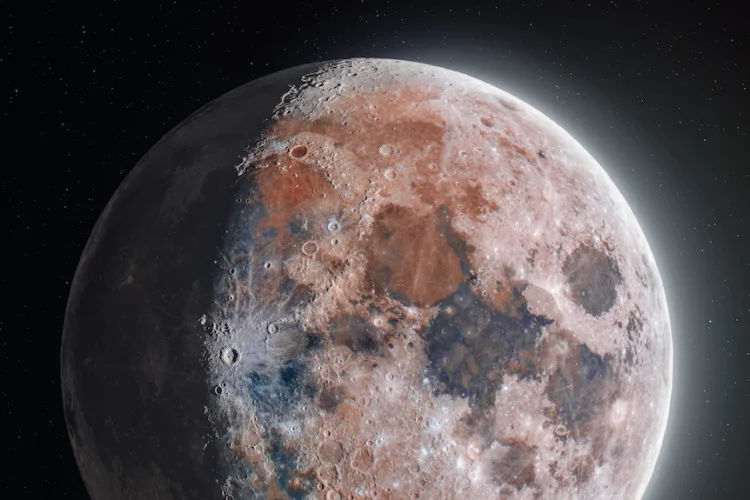By Samantha Jones-
Two astrophotographers have posted an out of the world photo of the moon which has gone viral.The pair captured over 200,000 shots to create a single image.
Andrew McCarthy(pictured) and Connor Matherne collaborated last November to push their photography skills to the limit. Their finished product was posted online Saturday, and is currently gaining lots of attention on Reddit.
The 174-megapixel image, which captures the Moon’s craters, colours and textures in spectacular detail, was posted on social media.
Arizona-based Andrew McCarthy worked with planetary scientist and fellow space photographer Connor Matherne to create the image as a “collaborative tribute” to NASA’s forthcoming Artemis mission.
The NASA mission is due to lift off from Cape Canaveral on August 29, the first uncrewed test of the Space Launch System super heavy-lift rocket capable of taking humans back to the Moon.
McCarthy and Matherne’s latest project, which began last November, combines more than 200,000 individual shots into one image. All of the photos were taken on a single evening, with the pair then spending nine months editing and compiling their work to make the finished product.
“The whole thing is assembled like a mosaic, and each tile is made up of thousands of photos,” Mr McCarthy told NPR.
He explained that he while he took thousands of pictures revealing intricate details of the lunar surface, Mr Matherne focused on the Moon’s colours.
Mr McCarthy told NPR that while only “basic” equipment – a camera, tripod and star tracker – was needed for their lunar photoshoot, the main requirement was patience to wait for perfect sky conditions, free from light pollution.
The first image of the Moon is thought to have been captured by French artist and inventor Louis Daguerre in January 1839
The two stargazers first connected over Reddit and then Instagram, sharing and commenting on each other’s work over the past three or four years. After recognizing one another’s strengths in photography, they decided to team up for a photoshoot of Earth’s moon.
Image of moon captured by telescope of more than 200,000 shots pieced together: Andrew McCarthy and Connor Matherne
“When he and I put our heads together we were able to make something a little off brand for both of us, which is cool,” McCarthy told reporters at NPR. “The whole thing is assembled like a mosaic, and each tile is made up of thousands of photos.”
McCarthy said he specializes in detailed photographs, taking tens of thousands of photos to capture the geographical features on the moon’s surface. Matherne, who prefers to shoot deep space photos, specializes in colors.
Over the course of a single evening, McCarthy shot over 200,000 detailed photos of the moon from Arizona, while Matherne shot another 500 images from Louisiana to capture color data. They combined their work by stacking the photos on top of one another to create a detailed image of the moon in spectacular color.
“Andrew aimed purely for the detail side whereas I aimed purely for the color side,” Matherne said. “That allowed us to get the full moon.”
The apir spent the next nine months bouncing edits and ideas off one another about the edits, using photo editing programs to help produce the best image possible.
Matherne and McCarthy said though their work is technical, it is not out of reach for other photo enthusiasts. All that’s required is a camera, tripod and a star tracker. Aspiring astrophotographers can take their work to the next level by purchasing a telescope, but the two said it’s best to develop basic photo skills before taking that next step.
A successful shoot relies heavily on clear skies and limited light pollution. Most nights McCarthy walks away empty handed, but that makes successful shoots all the more meaningful.
“If you can’t handle that, then you’re not going to get to the point where you’re getting these great pictures,” he said. “Anybody can do it, but it takes a special temperament.”
“Andrew aimed purely for the detail side whereas I aimed purely for the color side,” Matherne tells NPR. “That allowed us to get the full moon.”




